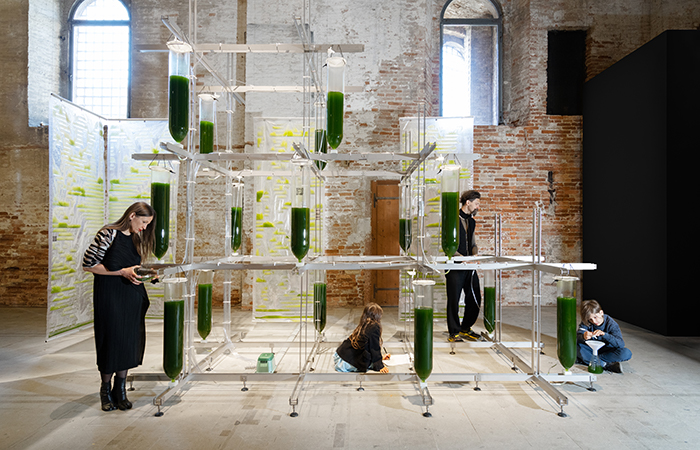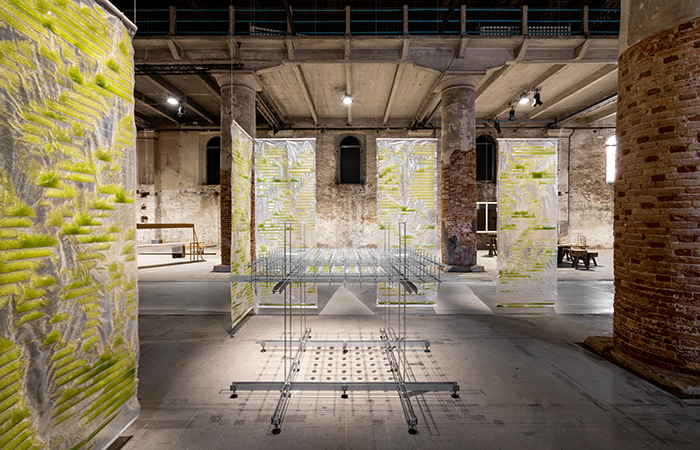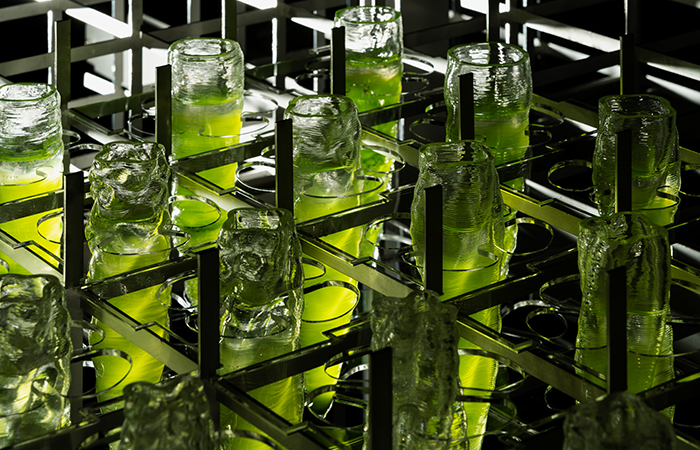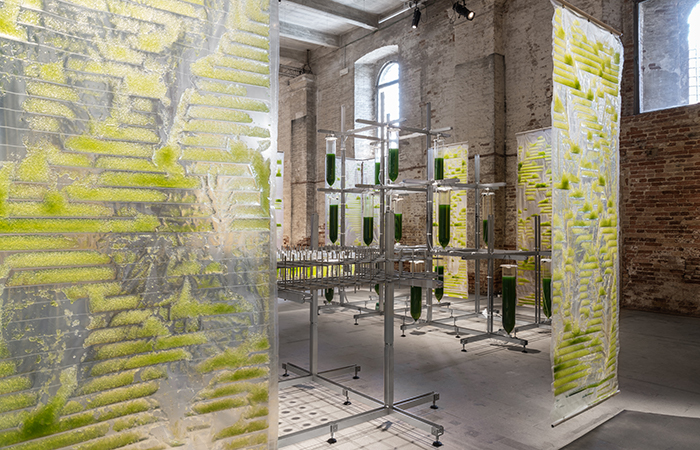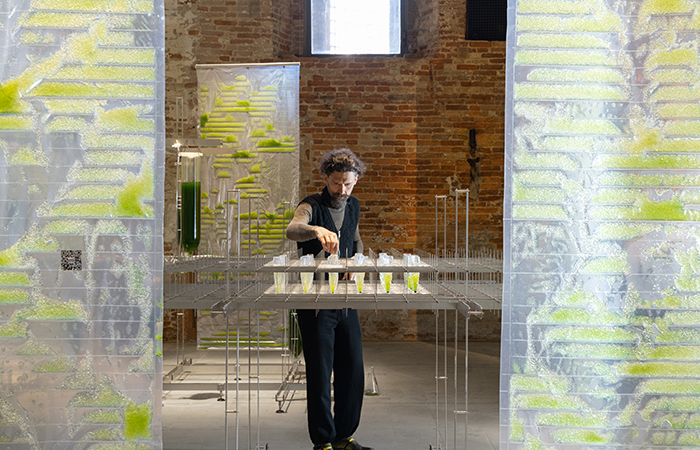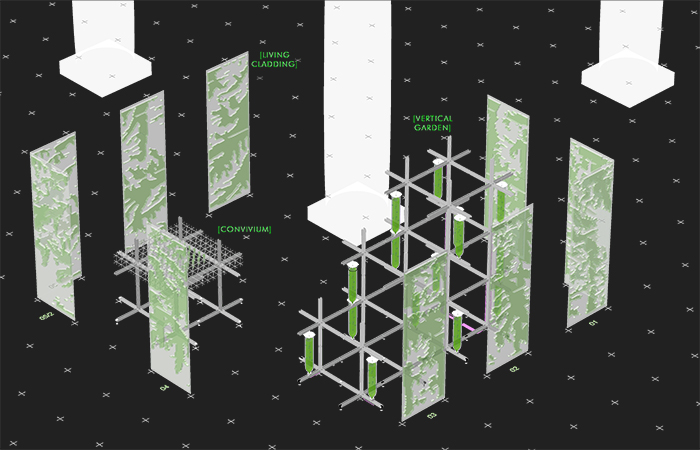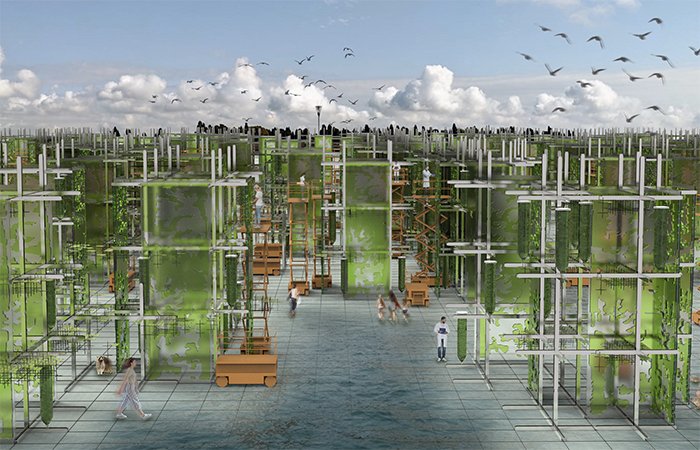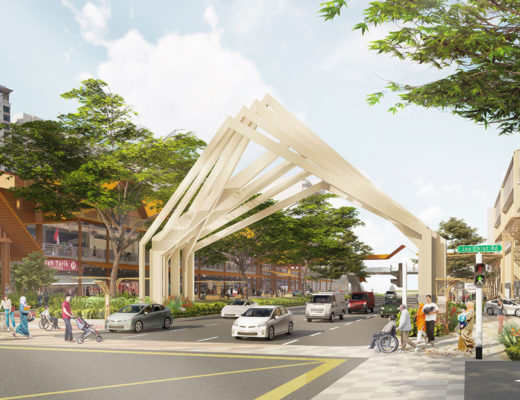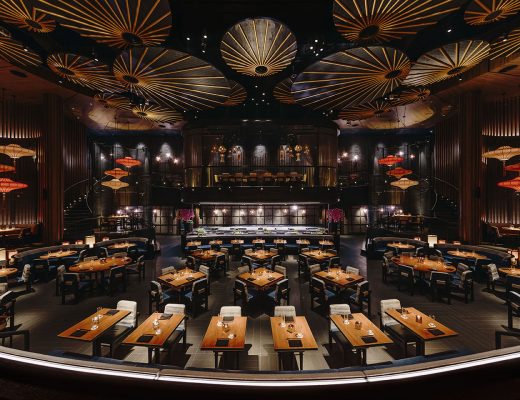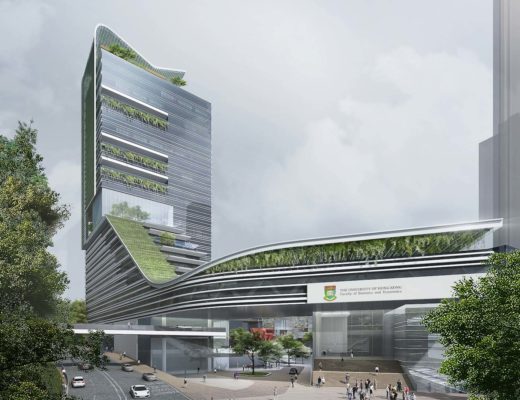An exhibition at the ongoing Venice Architecture Biennale has put the spotlight on a rather unexpected organism – Spirulina, popularly known as algae.
London-based urban design firm ecoLogicStudio is presenting a unique concept that makes algae the star of enclosed spaces. Having researched and worked on the concept for 10 years, co-founders of the studio, Dr Claudia Pasquero, head of the Institute of Urban Design at the Leopold-Franzens University of Innsbruck, and Dr Marco Poletto have gathered that algae can not only clean the air and provide valuable proteins, but also push architectural boundaries.
Within the “As New Households” section of the Corderie dell’Arsenale, the BIT.BIO.BOT is a 1:1 scale installation – an immersive experiment in the domestic cultivation of the urban microbiome. The experimental space is designed to test the co-existence between human and non-human organisms in the post-pandemic urbansphere.
The installation is an urban laboratory that combines advanced architecture with microbiology to build an artificial habitat, managed by a collection of systems that enable the cultivation of microalgae in the urban realm.
The advanced architectural system on show at the Corderie is the result of a decade of bio-digital design research, developed by ecoLogicStudio and combining computational design strategies (BIT) with proprietary fabrication techniques (BOT) to implement a collective microbiological cultivation protocol (BIO).
BIT.BIO.BOT is composed of three fluidly interconnected systems that embody the fundamental architectural environments of a future dwelling: the Living Cladding, the Vertical Garden and the Convivium.
The Living Cladding re-defines the limits between human and non-human realms, and between architectural indoor and outdoor. It is composed of 10 PhotoSynthEtica curtains. The unique version unveiled at the Corderie features a morphological pattern inspired by the surrounding brick walls, highlighting the microbiological nature of the Venetian architectural fabric.
The Vertical Garden creates a thick buffer zone located between the Living Cladding and the Convivium, dedicated to an intensive model of vertical algae farming. Each unit of Vertical Garden, made of lab-grade borosilicate glass and 3D-printed bioplastic components, hosts 10 liters of micro-algae cultures in a highly efficient growing medium. Algae can be independently harvested from each unit several times per week to collect up to one hundred grams of biomass, which is the daily recommended protein intake of a family of four. While active in production, the Vertical Garden is able to absorb CO2 at a rate equal to three large mature trees, providing a clear path to carbon neutrality in architecture. They are said to be able to filter carbon dioxide from the air even more effectively than trees. Each of the curtains can bind one kilogram of carbon dioxide per day that translates into carbon absorbed by 20 trees on average.
The Convivium is a space for sharing and for collective experimentation on the future of food. It hosts 36 unique pieces of crystal glassware designed to encourage experimentation in consumption. The entire installation – as well as the individual systems – are fully reversible. At the end of the Biennale Architettura, in November 2021, each unit will become an educational algae garden in Wattens in Tyrol (Austria). As part of the Destination Wattens initiative, the algae project is not only intended to serve as a teaching garden, but also to actually prepare society for future eating habits.
In an even more practical application, algae will soon be providing fresh air in Lisbon: the ecoLogicStudio is currently working with Nestlé on a new, future-oriented organic office building with urban farming.
The Architecture Biennale in Venice runs until 11 November 2021.
Design team: Claudia Pasquero, Marco Poletto with Eirini Tsomokou, Oscar Villarreal, Claudia Handler, Korbinian Enzinger, Terezia Greskova, Alessandra Poletto, Emiliano Rando.
Academic partners: The Synthetic Landscape Lab at Innsbruck University, The Urban Morphogenesis Lab at the Bartlett UCL.
With the additional support of Innsbruck University, Swaroski, Ecoduna, Destination Wattens, anonymous donor.
Photos: ©Marco Cappelletti
You might also like:
11 Asian and Middle Eastern pavilions at the Venice Biennale 2021

